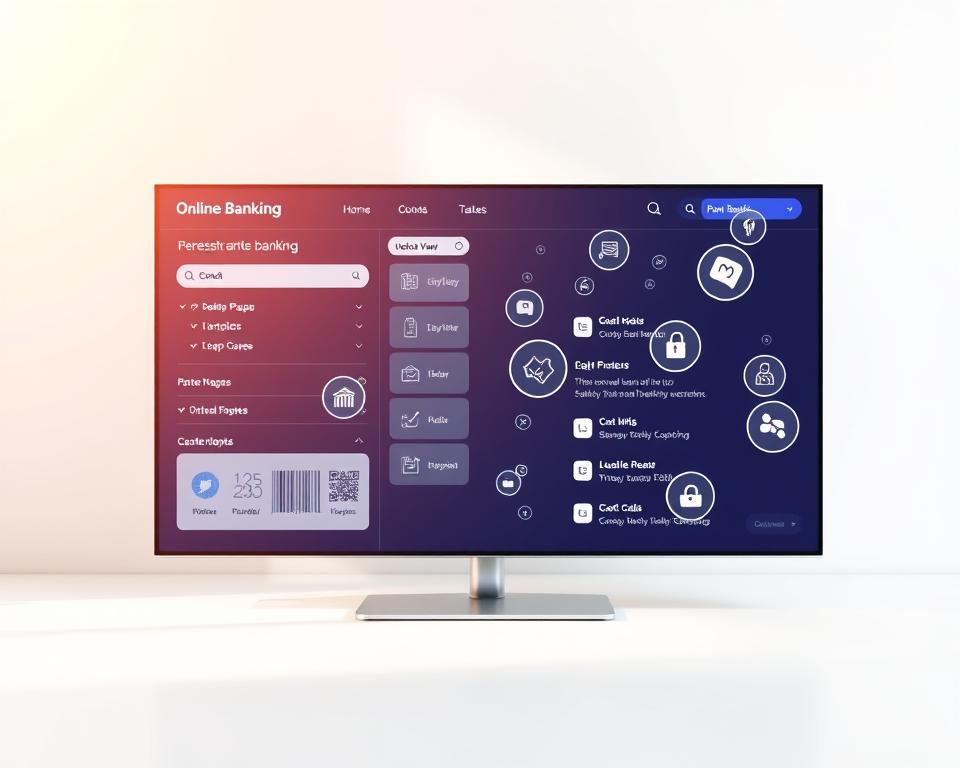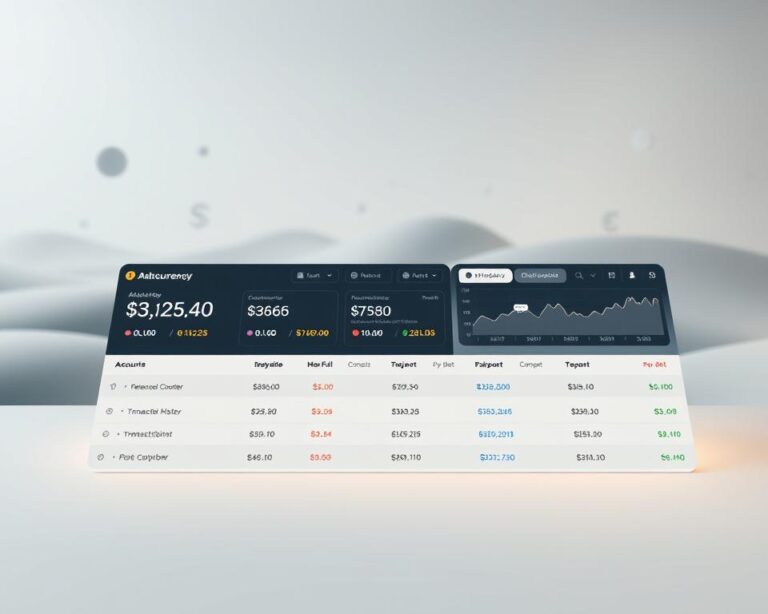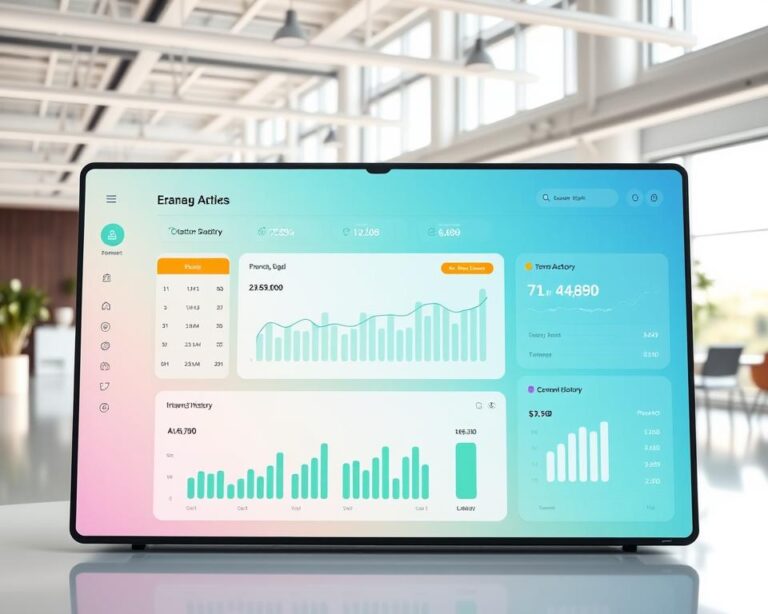Advertisement
Did you know over 76% of Americans use online banking? This shows a big change in how people handle their money today. The debate between traditional and online banking is growing, making it important for people to think about their choices.
We will look at the main differences between these banking ways. We’ll talk about the good things about online banking and the safety and personal service of traditional banks. Knowing about these options can help you make smart choices for your money.
What is Online Banking?
Online banking has changed how we handle money. It’s key to know what online banking is for those in today’s financial world. It uses technology to make managing money easy and fast.
Definition and Overview
Online banking means doing banking on the internet. It lets you manage your money without going to a bank. It’s popular because it’s easy and accessible.
Key Features of Online Banking
- Account Management: You can check your balance, see your transactions, and get monthly statements.
- Payment Services: You can pay bills, transfer money, and send money to friends.
- Customer Support: Banks offer help through chat, email, or phone.
- Mobile Apps: Banks have apps for easy banking on your phone.
How Online Banking Works
To start with online banking, sign up on a bank’s website or app. Once you’re in, you can safely check your accounts. It uses strong security to keep your money safe.

| Feature | Benefits |
|---|---|
| Convenient Access | Available 24/7 from anywhere with internet connection. |
| Reduced Fees | Many online banks offer lower fees compared to traditional banks. |
| Efficiency | Quick transactions without waiting in line. |
| Environmental Impact | Less paper usage due to digital statements and transactions. |
What is Traditional Banking?
Traditional banking means financial places with real branches where people can do banking stuff. They have services like checking and savings accounts, loans, and investments. These banks focus on meeting customers face-to-face, offering services that fit their needs.
Definition and Overview
Traditional banking is about banks with real buildings. People go there for personal service and to do their banking. This way of banking builds trust in the community, as people get to know the bank staff well.
Key Features of Traditional Banking
- Physical Locations: Customers can visit branches for consultations and transactions.
- Extensive Range of Services: Traditional banks provide checking accounts, savings accounts, loans, and wealth management services.
- In-Person Customer Service: Staff are available to assist with inquiries, applications, and problem resolution.
- ATM Accessibility: Many banks have a network of ATMs for cash withdrawals and balance inquiries.
- Established Reputation: Long history of operations contributes to customer trust and reliability.

Benefits of Online Banking
Online banking offers many benefits for today’s financial needs. One big advantage is the competitive interest rates on accounts. Online banks can offer better rates because they save on costs without physical branches.
Higher Interest Rates
Many online banks have great online banking interest rates for savings and CDs. They pass savings to customers, offering APYs that often beat traditional banks. This means customers can earn more on their savings.
Lower Fees
Online banking usually has lower fees than traditional banks. Without branches and staff, online banks can cut out monthly fees and often don’t require a minimum balance. This makes banking more affordable.
Convenience of Digital Transactions
Digital transactions have changed banking. Online banking lets you access your accounts anytime, anywhere. You can easily transfer funds, pay bills, and deposit checks with apps. This fits well with today’s busy lives.
Drawbacks of Online Banking
Online banking is convenient but has its downsides. Knowing these can help you choose the right bank for you.
Limited Cash Deposit Options
One big problem with online banking is the hard time you might have depositing cash. Some online banks work with stores for cash deposits, but many don’t. This makes it tough for those who often deal with cash. Without the option for online banking cash deposits, you might have to look for other banking options.
Less Personal Customer Service
Online banks also lack the personal touch many customers want. They often use digital ways to communicate, which can feel impersonal. This can cause problems, especially when you need help with something complex right away.
Technology Dependency
Online banking needs technology to work. Any tech issues, like server problems or internet outages, can block your access. This makes you rely too much on tech for banking. It might not be good for those who prefer simpler, less techy banking.
Benefits of Traditional Banking
Traditional banking has many benefits for those who like personal interaction and a wide range of financial services. Getting help in person can make banking better and give peace of mind when dealing with money.
In-Person Assistance
One big plus of traditional banking is the chance to get help in person. You can go to a bank branch to talk to friendly staff. This is great for complex transactions or sensitive financial issues.
Meeting face-to-face helps understand things better and gets quick answers. It makes the banking experience more rewarding.
Wide Range of Services
Traditional banks offer more than just basic accounts and loans. They have special services like retirement accounts, investment advice, and mortgage planning. You can get these through personal meetings.
The quality of service in banks is a big draw. Many banks focus on helping customers with their financial needs through direct talks.
| Service Type | Traditional Banking | Online Banking |
|---|---|---|
| In-Person Support | Available at branches | Limited to online channels |
| Comprehensive Financial Services | Extensive offerings | Focused on basic banking needs |
| Customized Financial Advice | One-on-one consultations | Predominantly automated tools |
| Branch Accessibility | Physical locations | No physical presence |
Drawbacks of Traditional Banking
Brick-and-mortar banks have their perks, but they also have downsides. One big issue is the fees they charge. These fees can make it hard for people to reach their financial goals. Monthly fees, transaction costs, and overdraft penalties add up quickly.
These expenses can make banking expensive for many. It might even stop people from managing their money well.
Higher Fees
Traditional banks often charge more than online banks. You might face monthly fees, penalties for not having enough money, and extra costs for wire transfers. Many customers are unhappy with these fees.
They wonder if the services are worth the money they pay. This can make them question the value of traditional banking.
Lower Interest Rates
Another problem is the lower interest rates at traditional banks. Online banks usually offer better rates, but traditional banks often don’t. This can make saving less appealing.
People who want to grow their savings might find traditional banks less attractive. This can make the downsides of traditional banking seem too big to ignore.
Online Banking vs Traditional Banking
Online banks and traditional banks offer different services. Customers choose between convenience and a wide range of financial products. This comparison shows the unique services and user experiences of both models.
Comparison of Services Offered
Online banks focus on basic needs like checking and savings accounts. Traditional banks, on the other hand, offer more, including loans, mortgages, and investments. If you need many financial products, traditional banks might be better.
Access to Branch Locations
Traditional banks have physical branches for in-person help. This is great for those who like face-to-face banking. Online banks don’t have branches, so customers use digital platforms instead. The choice between physical and digital banking depends on personal preference.
Technology and User Experience
Online banks excel with easy-to-use apps and websites. They are perfect for tech-savvy customers. Traditional banks are also getting better at technology but might not match online banks’ digital ease. This affects how happy customers are with their banking experience.
How to Choose the Right Banking Option for You
Choosing a bank is a big decision. It’s important to think about what you need from a bank. Things like how often you use the bank, if you need to handle cash, and if you want to talk to someone in person are key. These factors help decide if an online bank or a traditional bank is better for you.
Assessing Your Banking Needs
Knowing what you need from a bank is crucial. Think about your usual banking activities. For example, if you often use cash, a traditional bank might be better. But, if you like using online banking, an online bank could be the way to go.
Evaluating Costs and Benefits
Costs are a big part of choosing a bank. Look at fees, interest rates, and any extra charges. Online banks usually have lower fees and better interest rates. Traditional banks might cost more but offer personal service. Comparing these can help you make a smart choice.
Consider Hybrid Banking Solutions
Some people might want a mix of both online and traditional banking. This way, you get the benefits of digital banking and still have access to in-person help when you need it. Finding a bank that offers both can give you the best of both worlds.
Safety and Security in Online Banking
More people are using online banking, making safety and security key. This section looks at FDIC insurance for online banks. It also talks about the safety steps these banks take to protect your money.
FDIC Insurance and Protection
Many online banks offer FDIC insurance. This means your deposits are safe up to $250,000. It shows that your money is protected, even if the bank faces money problems.
It’s important to check if your online bank is FDIC insured. This ensures your money is well-protected.
Safety Measures Practiced by Online Banks
Online banks use many safety steps to keep your money safe. They use encryption, two-factor authentication, and do security checks often. These steps help fight fraud and cyber threats.
By focusing on security, online banks make a safe place for you to handle your money online.
The Future of Banking: Trends to Watch
The banking world is changing fast, with new trends shaping how we manage money. Technology is leading the way, making banking more user-friendly and innovative. Knowing these trends can help both consumers and businesses stay ahead.
Rise of Digital Banking Solutions
Digital banking is growing fast, thanks to people wanting easy and flexible ways to handle money. Online banks and neobanks are gaining popularity among those who love digital tools. This shows a big shift towards digital banking, pushing traditional methods aside.
Integration of Fintech Companies
Fintech companies are joining forces with banks, bringing new services to the table. These services make banking more personal and efficient. Working together, banks and fintech startups create better products for everyone.
Customer Experience in Online and Traditional Banking
In today’s banking world, how customers feel is key. Online and traditional banking offer different ways to help. Knowing these differences helps people choose what works best for them.
Online Support Options
Online banking uses digital tools for support. You can get help through live chat, email, and phone. These options are quick but might not feel as personal as talking to someone in person.
Virtual assistants, like chatbots, help a lot. They answer simple questions anytime. This means you can get help without waiting.
Customer Satisfaction Ratings
How happy customers are varies between online and traditional banking. Online banks are often praised for being easy and fast. People like getting answers quickly with the help of virtual assistants.
Traditional banks, however, are valued for personal service. Meeting a bank representative in person builds trust. Looking at ratings helps figure out which banking style fits your needs better.
| Banking Type | Support Channels | Customer Satisfaction | Key Strengths |
|---|---|---|---|
| Online Banking | Live Chat, Email, Phone | High Efficiency Ratings | Quick Solutions, 24/7 Availability |
| Traditional Banking | In-Person, Phone | Higher Personal Interaction Ratings | Trust and Personal Relationship |
Conclusion
Choosing between online and traditional banking depends on what you need and like. Online banking is great for its ease and lower costs. On the other hand, traditional banking offers face-to-face help and a wide range of services.
Knowing the good and bad of each helps you pick the right banking for you. This choice should match your financial goals and how you live. As banking changes with new tech and services, staying informed is key.
This way, you can get the most out of your banking. You’ll choose the best bank for you. Being smart about this can make your banking experience better.



